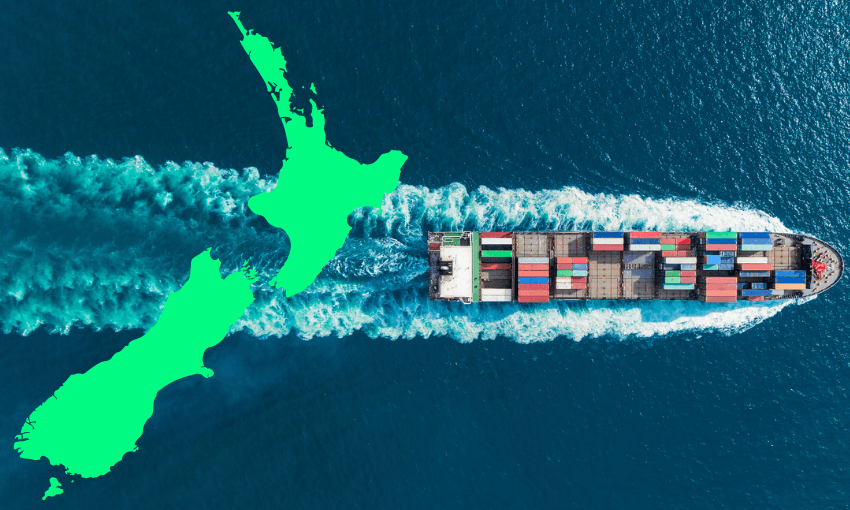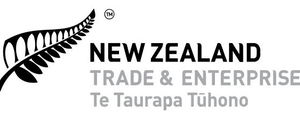New Zealand’s economy is built on exports. But for a business, becoming an exporter is a lot harder than just making a good product and sending it overseas. So where can a prospective exporter turn for help?
Sarah Sherriff was sitting in a ski field cafe in Whistler, British Columbia, staring intently at the clothing of everyone who walked past. It was the first team meeting of Icebreaker’s newly expanded Canadian operation, the first major export market for the manufacturer. They’d decided they couldn’t leave the cafe until they spotted someone wearing an item of Icebreaker clothing. It took 45 minutes until a woman walked in bearing the brand’s logo. “I wanted to hug her,” Sherriff laughs.
That was 17 years ago. The Icebreaker staff go back to that same spot every year. It doesn’t take 45 minutes to spot one of their jackets anymore. “Now it’s like a uniform, everyone’s wearing it,” she says.
New Zealand is a small trading nation and exports are a critical part of our economy. New Zealand exports were worth $84b last year, and 1 in 4 people are employed by an exporter.
Challenging domestic conditions means more businesses are looking overseas to find new customers. New Zealand Trade & Enterprise works with more than 5,000 businesses trying to access global markets. The recruitment process can go both ways; sometimes businesses come to NZTE because they want to export and need help, other times they’re shoulder-tapped by agency staff who actively prospect for businesses they can add value to.
Today, Sherriff is one of hundreds of private sector advisors around the world working with NZTE to help New Zealand businesses get into – and stay in – export markets. She’s helped take brands such as Icebreaker, Whittaker’s, and Fix & Fogg to the world – as well as her own startup, Herbivore.
Sherriff says many businesses underestimate the complexity of exporting, especially in markets they think they know well. If a CEO walks in her door and says, “We want to export to America”, that’s a sign they’re not ready, Sherriff says. But if a business owner says something like, “We want to access the pharmacy channel in southern California”? That’s a sign they know what they’re doing.
“You need to get specific on the goals and choose where you want to go rather than letting the market choose you,” she says.
Many businesses enter the export market almost by accident: in Icebreaker’s case, a New Zealander in Switzerland asked to sell some products over there. While it worked out for Icebreaker in the end, this approach can be risky.
Businesses start to become more intentional about their plans when they realise it is hard to profitably export directly to a retail store in another country. Having a professional distributor operating under the local currency and laws makes a big difference, although they typically won’t do it all – you still need to do the hard and often expensive work of generating demand for your (previously unknown) product in an immense foreign market.
Wasting time and money focusing on the wrong export market can hold businesses back. For example, if a country has stringent implementation rules or requires a custom label, that can eat into profit margins quite significantly.
“I’ve closed down export markets for businesses. Closing down markets is a really healthy thing,” Sherriff says. “When you start a job as head of exports and you immediately shrink your exports, you start to wonder what you’re doing. But it keeps you free to focus on the markets that have the biggest opportunities, are less complex to serve, and can make you more money.”
Sanchia Yonge is the general manager of Customer Solutions at NZTE. She oversees a suite of resources for businesses looking to make the jump overseas, including coaching from private sector advisors like Sherriff, market research, a grants programme, and a range of online tools and services that support exporters.
“We’re really focused on helping export businesses take some of the risk out of their decision-making so they can get the best return on investment,” she says. “If you’re working with us, we want to help you see what’s up ahead, and make a plan for how you’ll get through it all.
“We have research that will tell you how big the market opportunity might be, and tools that will help you figure out what you could charge offshore. We have a framework you and your team can work through to strengthen your brand.
“Because we’ve worked with so many businesses, we know what good looks like and can show you what works.”
When exporters take a structured approach to choosing where to go, comparing and ranking markets based on hard data, they are a lot more successful, she says. “What we also really encourage businesses to do is visit the markets, get to know the landscape, and get to know the end customer. Those on-the-ground market insights are invaluable. We encourage them to make sure they know their go-to-market strategy, their distribution, and their sales channels.”
Sarah Sherriff agrees that focusing too much on your own product and not enough on your end customer is a common pitfall.
Most of the businesses she works with have great products. In fact, if a business is succeeding in the small New Zealand market, she says that’s an almost-certain sign that the product is good enough to successfully export. It’s usually the business that needs work. “Your products are probably ready, but you’ve got a long way to go,” she says. It’s typically a two year process to get a business ready for export.
Exporting is “like a rollercoaster”, she says: there’s a lot of travel and a lot of excitement, but it can also mean late nights, weird hours, and putting out fires on the weekend. But even to this day, she still loves those little moments, like spotting an Icebreaker jacket in a Canadian ski field cafe. “Every time I’m overseas and see someone with a New Zealand product, it’s a thrill.”

